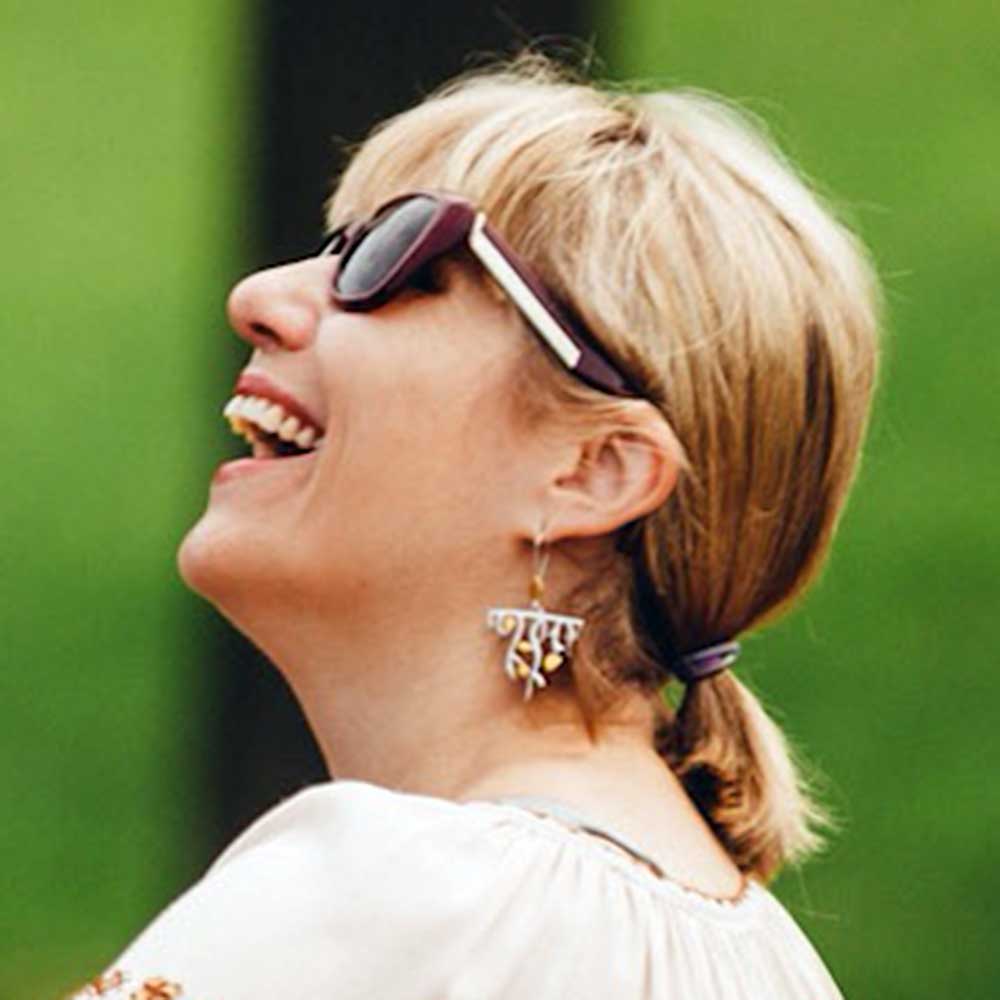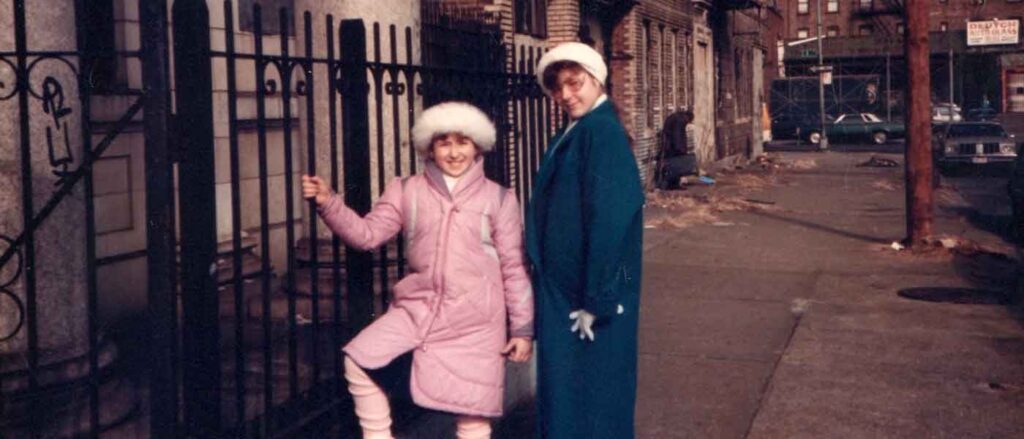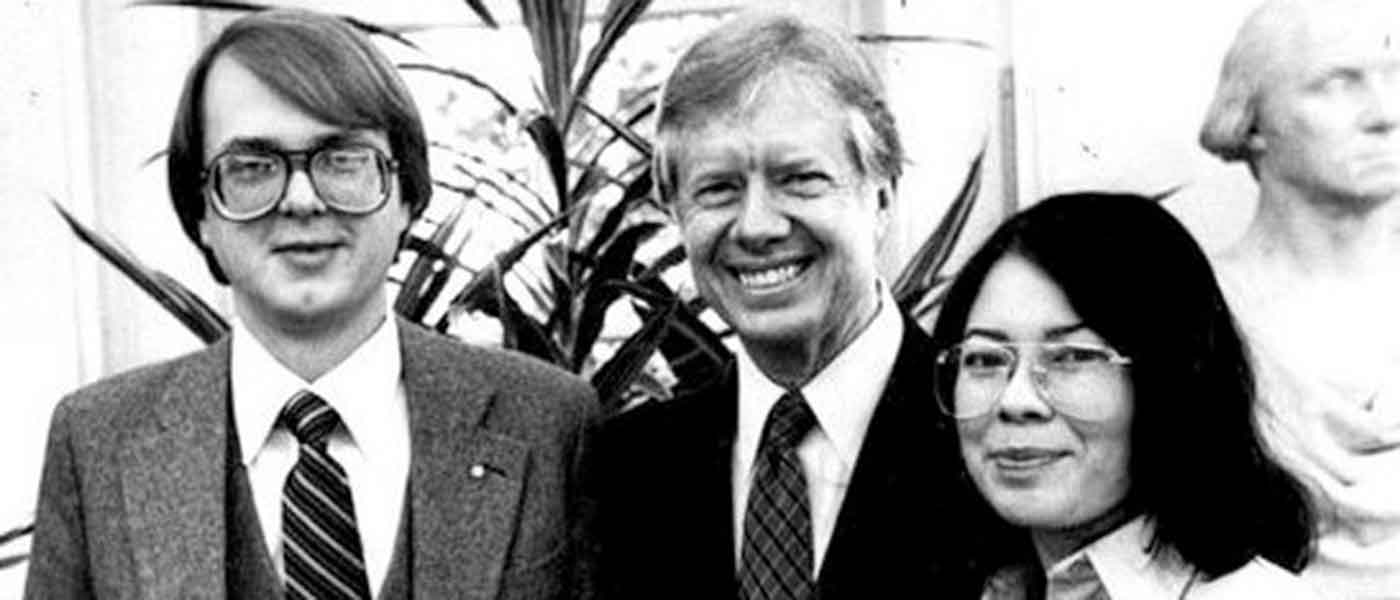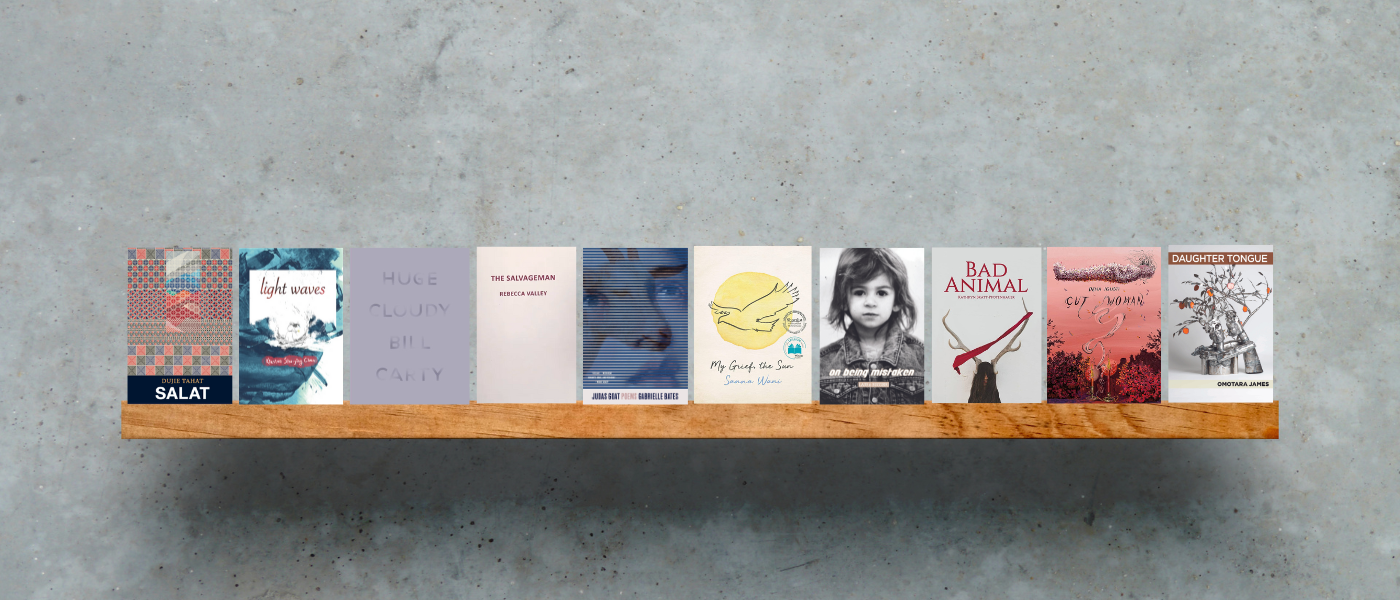The door frame hugs me as I step across a boundary in time. On one side, I see my third-grade self listening to the booming Miss Carroll, who demanded so much from us that sometimes I would ask for a bathroom break during a quiz so I could cheat my way to a 100%. I feel little. I step back across the boundary and I am my 36-year-old self again, looking at my two-year-old daughter entering the same classroom for her upmarket pre-school experience. I am caught between the two worlds, between the culture and roots of the now-defunct Holy Ghost Ukrainian Catholic School and the modern Reggio Emilia fad of Williamsburg Northside Pre-School that today rents the space. I want to honor the past but live in the present, uncertain of how to bridge the gap, unsure of how I can preserve memory for my daughter without making her feel beholden.
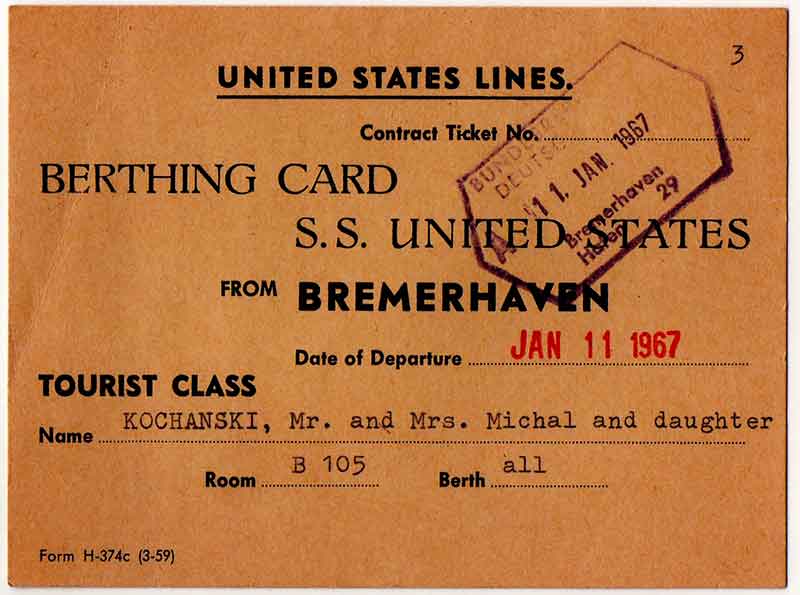
I am Ukrainian-Polish-American, born and raised in Williamsburg, Brooklyn, back when it was home to hoards of Slavic immigrants. There are not many of us “originals” left in this gentrified neighborhood. Most transplants are stunned to hear that someone actually grew up in an area they believe was barren before their arrival. I feel like a missionary preaching about the olden days, about the only place I ever felt at home: Bedford Avenue, North 9th Street, Driggs Avenue, North 5th Street, South 5th Place — streets of memory. I try to keep the past alive amidst new highrises burying old factories. Reinvention, after all, implies you are bringing back or reviving as well as inventing again.
There are only a few pockets left of the old Ukrainian neighborhood these days: a Ukrainian flag in a window, an aging brownstone owner whose children have not been able to convince him to sell, a bakery that shills babkas and pierogis, and Holy Trinity Ukrainian Orthodox Cathedral.
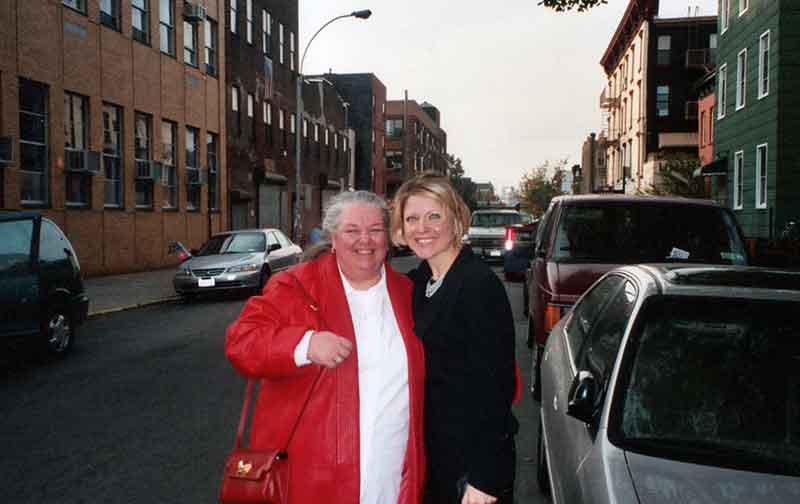
During my visits home throughout the 1990s, I had seen these streets changing, but nothing like the sketching that has transformed the skyline over the past 15 years. I am still astounded when cabs willingly cross the Williamsburg Bridge and am even more amazed when buses spill Japanese tourists onto my street to take in the Mast Brothers chocolate shop and other tales of Williamsburg these days. I remember when my ‘burg was a pariah, little known and less desired by those who didn’t know any better.
This new wave of re-imagining Williamsburg is just another in a long line of reinvention. When I meet someone new to the area — anyone who has lived here for less than a decade is new to me — and they are astounded that I survived Williamsburg in the derelict early 1980s, I try to open the door and show them the place that once was. It may not have been the prettiest neighborhood in the world, but it was where my parents and the wave of Eastern European immigrants who arrived in the 1950s and 1960s imagined as home. They went about recasting Williamsburg just as the Germans and the Irish did before them, and the English and the Dutch before that. They created a doorway to their former villages — a butcher, a grocer, and a fishmonger greeting them with familiarity and safety. Each house filled with icons and vyshyvanky.1 Each holiday celebrated with dances and street festivals. The Ukrainian flag flown despite the USSR trying to destroy national identity.
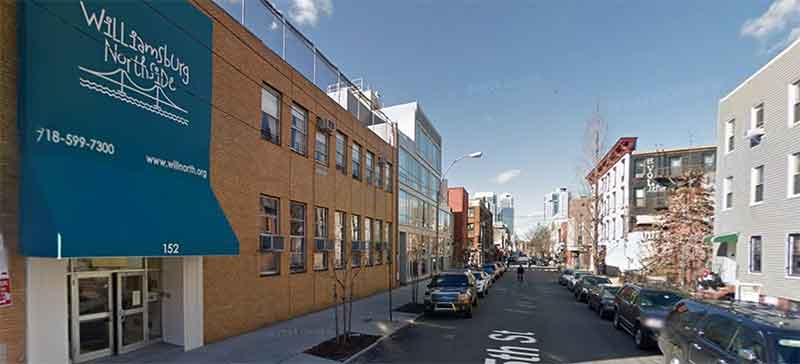
My grandfather, Dido Mikhailo, a one-time defender of Ukrainian freedom, was cast out into America in 1967. He bought the three-story, two-family house I grew up in five years later (and that my mother still lives in) for $75,000. (Our neighbor, the minor celebrity and NY1 anchor, Pat Kiernan, bought the attached gut-renovated townhouse for $2 million in 2013.) It was already an old house, built around the turn of the century for all the manufacturing workers who flooded the neighborhood, part of three attached buildings that surely served as tenement housing. They always reminded me of the apartments described in Betty Smith’s 1943 novel, A Tree Grows in Brooklyn, which tells the story of a second-generation Irish-American family in Williamsburg during the turn of the 20th century. I always felt like the protagonist, Francine. Just as she struggled against ethnic discrimination (in her case, antagonism against the newly emigrated Irish), I faced Polish jokes and jabs at my parents’ accents. And like Francine, I have found my voice in my writing.
I see my parents making a home on the first two floors, and my grandparents living in the upstairs apartment. I remember project after project — digging out the dirt in the basement, cementing the tiny backyard, redoing the kitchen. We always seemed to have more than enough help as our space was constantly filled with an aunt or an uncle living there for a short time to make dollars in local candle and button factories and then bringing the funds back to poor communist states. We spoke Ukrainian and Polish at home – I didn’t learn English until Kindergarten, and my grandmother never understood the language. Our world revolved around news from Ukraine and Poland.
Everything always seemed the same. Safe. Same. But that couldn’t have been true. Williamsburg was being reinvented even as I was growing up, with newcomers who changed our class demographic to skew more Latino. (Case in point, my crush throughout elementary school was a boy named Abe Medina.) Every time I came home from college, I would see a new bar, restaurant, or art gallery, and I loved how the neighborhood seemed to be growing up with me.
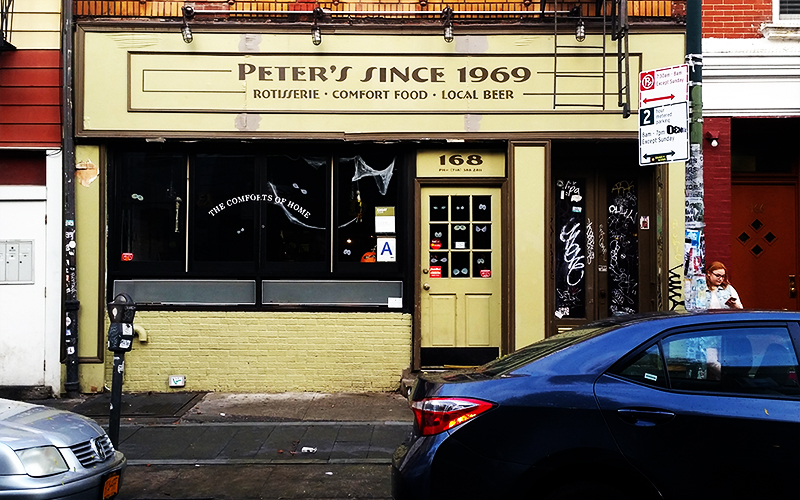
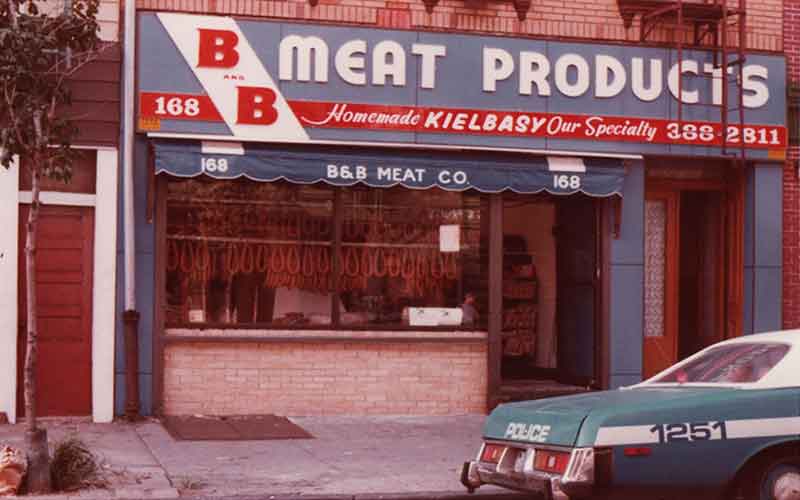
Another re-imagined shop: a topless bar five houses down from where I grew up. Back then, the windows were painted an impenetrable black with white letters blaring “Lounge” and “Go Go Girls.” I never saw anyone go in or out but I wasn’t often out after nightfall in Williamsburg in the ‘80s. Once or twice, I recall my mom accusing my dad of hanging out there after his late-night shift at the Domino Sugar Factory. I can neither confirm nor deny the accusations. All I know is that one day when I came home from college, it was replaced by a video store that did well for a while. Now it is a trendy restaurant called Trix, a subtle homage to its former glory. But I still had Pete’s Meat Market, run by our close family friend, on Bedford between North 7th and North 8th. He had learned how to be a butcher from the original owner in 1969 and commanded the business of kielbasa, kiszka,2 and golonka3 for decades. When we ran out of polenwica,4 we would run across Bedford Avenue to get some more. And we’d compare how it tasted versus the polenwica from Steve’s Meat Market, where my father worked on Saturdays back in Greenpoint. Pan Petro gave up butchering almost ten years ago after realizing he could make more by renting it to a rotisserie chicken joint. I miss him. On this one block stretch where Pan Petro was the mainstay, now there is only one store from way back remaining: Vittoria, a coffee shop run by the son of the former owner, re-imagined with brick walls and rock music for the new Williamsburg.
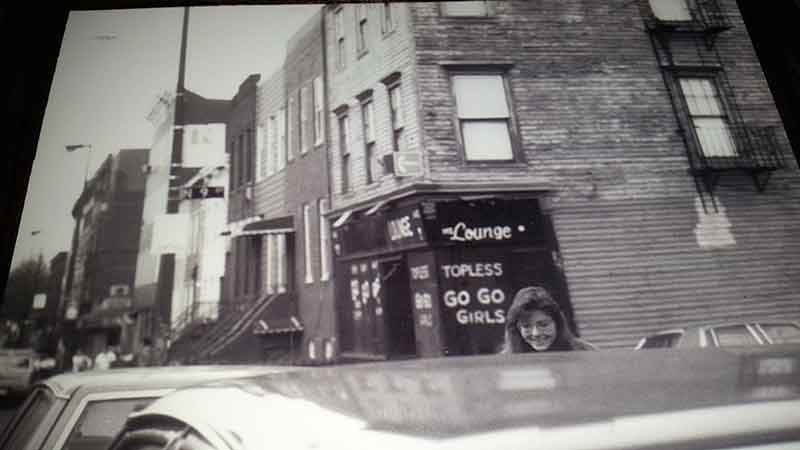
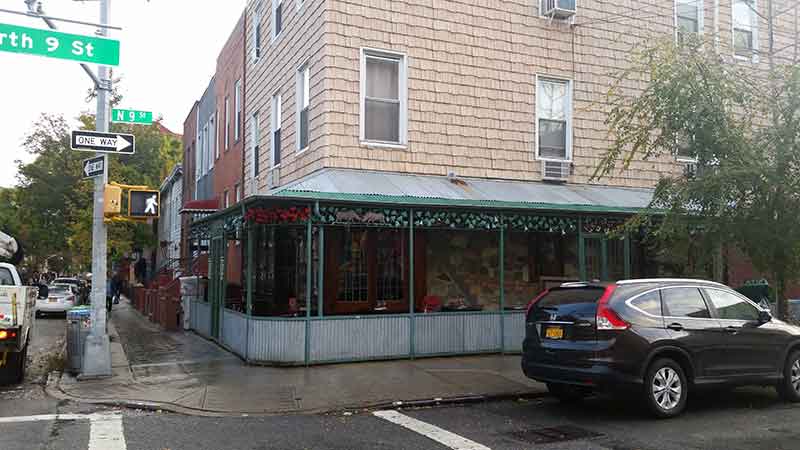
There/here — I stand in the shadow of the ten-foot vestibule doors on a Sunday and I see my grandmother singing in the choir, her soprano drifting above other voices. I will climb the three steps to her and stand the entire mass at her side adding my voice to hers for the final “Mnohaia Lita.”5 I will go to communion and share the Prosfora,6 breaking it into bits and handing them to other parishioners to give blessings. Now my daughter climbs the same steps and shares the same bread. My daughter who is named Anna in honor of the woman who most shaped my life — the woman who will always be there somewhere across that threshold. And through that doorway amidst the swirling incense and hushed chanting, my daughter will feel her past and her future. The one place that hasn’t changed much is Holy Trinity Ukrainian Orthodox Cathedral. The 1899 Parisian Beaux Arts Style building (now up for landmark status) was purchased in 1961 for $25,000 by Ukrainian immigrants who sought to create a new Orthodox parish. Reverend Wolodymyr Wronsky, who heads the congregation today, is one of the parish’s original founders. The mass is still said in Ukrainian to a new Ukrainian immigrant population that arrived in the 1990s and are still building their American dream. There, my parents were married under the church’s Tiffany glass dome; there, my sister and I were both baptized. Here, I decided to get married and baptize my own daughter. It remains an important doorway to my past.
1 Traditional shirt with Ukrainian ethnic embroidery
2 Stuffed intestine with a filling made from a combination of meat and meal, often a grain
3 Pig’s ankles
4 Smoked fillet of pork
5 May God grant you many years
6 Orthodox Christian Eucharistic bread
